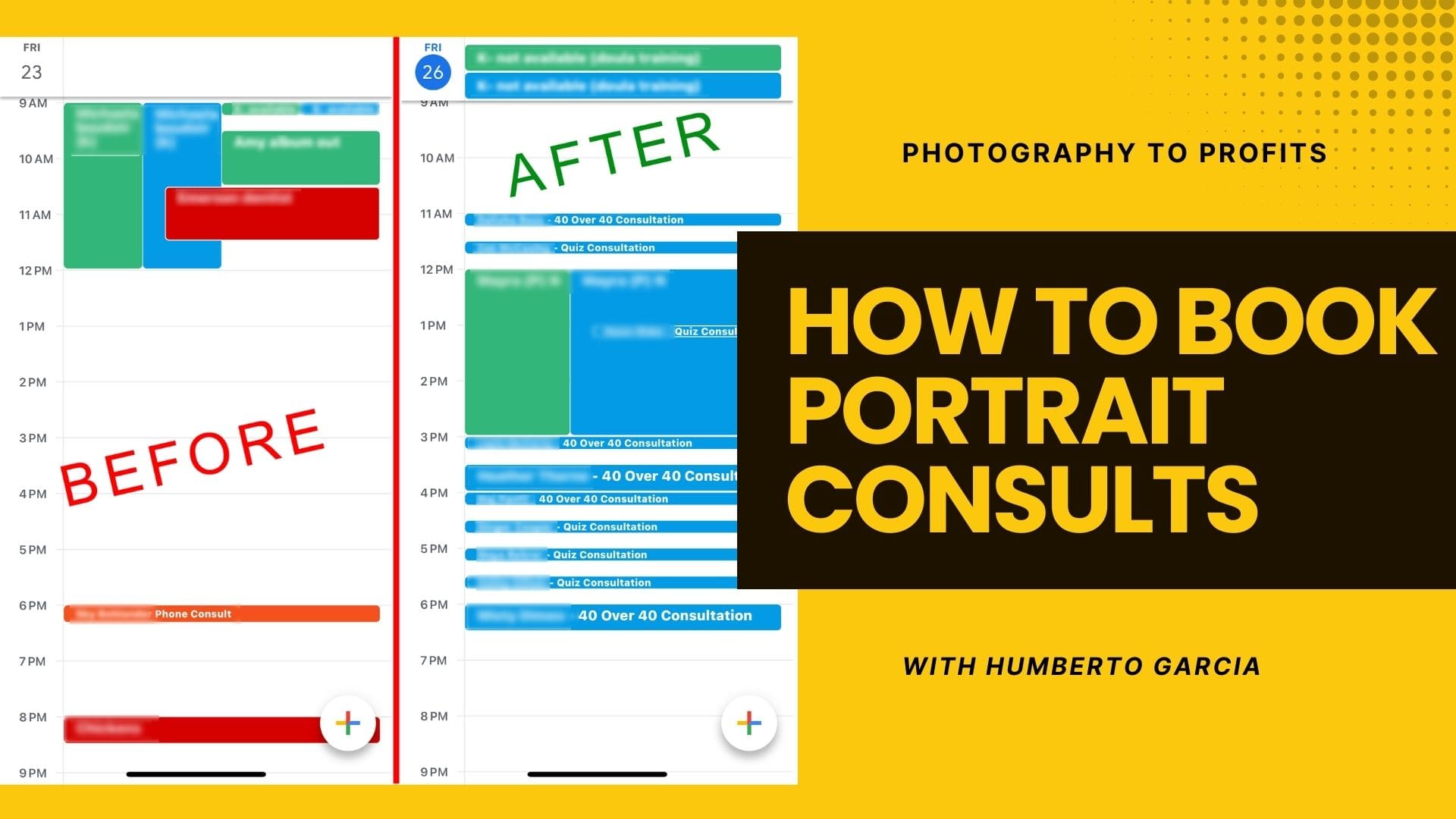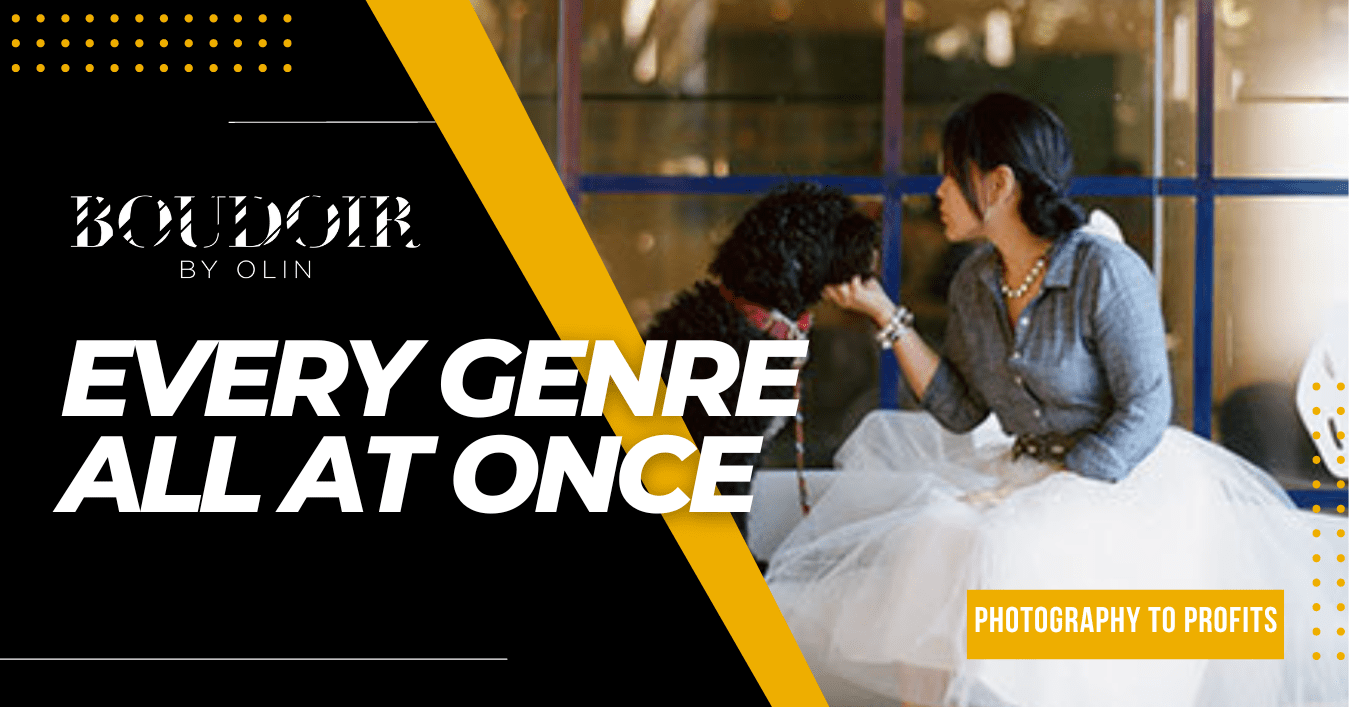“The best place to hide a dead body is the second page of Google search.”
—Anonymous
In today’s world, consumers have more choices than ever before. Shopping is no longer about the business that is down the street and around the corner. The store your mother, grandmother, and great-grandmother went to is no longer relevant for that fact alone. Nowadays it’s all about Google ranking. If Google thinks a business is good enough to be featured as a top result, then they are good enough to trust with your money.
Getting a top-ranking position on Google has become a major challenge for new and small businesses to overcome. And it can be especially true for the image section of Google search. Photographers in particular face an uphill battle when it comes to moving their business website to the top of the SERP (Search Engine Results Pages). SERPs display a list of both organic and paid search results.
The following are a few SEO tips that will help your photography website get a higher ranking on Google.
1. Understand Your Potential Clients And What They Want
The key to ranking high in search results is thinking like your potential clients. It really just takes knowing what they are searching for and the keywords they’re using in their searches.
In order to select the right keywords to use on your site to rank higher in search results, you first need to figure out what the most likely search queries will be. The good news is, there is no need to guess when it comes to this matter. You can use tools to find out what words people are searching for most often and what keywords are most likely to lead them to your website.
To do this, you do have to start with an educated guess. First, compile a list of what you think your potential clients might type into a search engine when looking for photography services in your area. Once you have a fairly long list of options, input them into the Google AdWords Keyword Planner.

Be sure to enter in your target locations to see the searches that are relevant to your area. Then click the button that says, “Get Ideas.”

After you have downloaded the comprehensive list that Google provides, narrow down the keywords down to the most relevant options and start using them on your website.

You can then analyze which keywords are attracting the most traffic and which ones aren’t helping your ranking. The keywords that bring the most leads to your website you can be expanded so that they’re longer and more specific. Slowly but surely, you’ll begin to rank higher and higher for queries that contain these keyword phrases, also called long-tail keywords.
As time goes on, you’ll slowly begin to understand your potential clients better, allowing you to add very specific keyword phrases that will consistently help you rank closer to the top of the SERPs.
Want to find out if your website is optimized for your keyword? Do a quick 15 second audit right here!
2. Un-Complicate Your Website
You can fill your website with as many keywords, links, and fancy graphics as you want, but if you don’t make it user friendly, Google will not like it and neither will your website visitors.
When it comes to single-service photographers, your goal should be to create niches within your niche. So if you only shoot weddings, your website’s navigation bar should include the following main pages: About, Weddings, Blog, and Contact. Under the “Weddings” section you can break things down further. You can have a page dedicated to themed weddings, one to small weddings, another to city hall weddings, and so on.
When it comes to multiple-service photographers, you should use a slightly different structure. If you do wedding, newborn, family, and school photography, your domain name should not be nashvilleweddingphotographer.com so as not to pigeonhole your branding.
Using only one of your photography services in your domain name you will create confusion and likely cause you to lose clients and lower your ranking in search engines. Instead, keep your domain name more general and just add a dropdown menu from a main category, like “Portfolio” to showcase the different types of photography you do. To illustrate, see the example below:
section, but the actual photography sections will be more spread out.

3. Add Alt Text to your images
Alt text, or alternative texts is used to describe the content of the photograph to search engines and others.. Though it may seem like adding photos to your site is as easy as selecting an image and uploading it, a little extra effort is needed to make sure your website is ranking as high as it can be. Believe it or not, your image filenames count towards your SEO score so they need to be descriptive.
When uploading photos to your website, don’t simply use names like image1.jpg or FEB2017.jpg. Instead, use a descriptive file name that is relevant to your website content and includes a keyword, when possible. For example, if you’ve taken a picture of a building on a college campus, then you should name the image file something specific like: Jones-Center-Business-School-Clemson-University.jpg.
Similarly, if you specialize in local photography, then make sure to always indicate the city that you practice in. For example, if you were taking pictures of nature at a national park, you may want to name your upload image: Oak-Tree-Autumn-Yosemite-National-Park.jpg. Try to keep the image names relevant to your business.
This image-naming technique is one of the more technical aspects of SEO, but it can make a big difference in your ranking. Adding alt text to your images is mainly meant for photographers who share their images in their blog as their primary source of content.
When people search for a specific type of picture on Google images, the alt text will make it much more likely for your image to show up in the search results, and thus make your website easier to find.
Find out more about image optimization by taking this quick questionnaire.
4. Check Out The Competition
A great way to get a feel for the keywords being used in your industry and local area is to check out your competitors. Now, you could simply do a search for similar photographers in your area, then go through their websites. This will give you a very basic idea of how their SEO stacks up to yours. But, if you want a much more in-depth and accurate review, you’ll need a few tools.
One great tool is the Moz browser plugin. Moz will show you how many websites link back to specific pages on a competitor’s site, as well as how many websites link to the root domain. When these numbers are combined, you will then also get the mozRank, allowing you to more accurately compare the quality of the websites you’re checking out.

Using Moz’s free SEO tools, you can: do keyword research, figure out what your competitors are doing to rank on Google, and see how you compare. The image below is a screenshot of the SERP for the keyword search “newborn photographer bucks county pa.” It displays who your fellow competitors are and where you currently rank for that particular keyword search.

We can help analyze your site’s SEO performance by running a report of your website. Schedule your appointment with me here.
5. Blogging
How many times have you heard as a photographer, “So you know you need to blog, right?” Probably so many times you want to scream! How do you blog? What should you blog about?
Now that you’ve done your research on the keywords people are using to conduct searches for photographers in your area, you should have an extensive list of keywords to use for in your blog articles. Blogging isn’t difficult, but optimizing each blog post for SEO takes practice and finesse.
When it comes to blogging, make sure your post title is unique, descriptive and includes your focus keyword. Also make sure that your focus keyword is within your meta description and your copy. There is no reason to “keyword stuff” your content by over using the same keyword over and over again. Keyword stuffing can negatively impact your web traffic and pagerank.
To illustrate, imagine you were looking for information on how to make a dress. If you found a blog with the long-tail keyword “How to make a dress” stuffed in it 15 times, would you give the post a lot of credibility even bother sharing it? Remember, even though you’re writing with the SEO ranking in mind, you’re still writing material for humans to read. The better the content, the more shares you’ll achieve, and that will give you a much better SEO ranking than awkwardly stuffing keywords in your text.

When you have an idea for your blog, make sure that it’s consistent with your business, your brand, and the type of photography that you want to rank for. If you’re a wedding photographer, a good example of a blog you can write is: “The 5 best locations for an Engagement Photography Session in _________” (insert your location here.)
If you’re wondering: “Wait a minute! You mean I shouldn’t blog each and every engagement session I’ve ever done?” I’m here to say, you could…. But, if you want to attract more traffic to your website, then it’s better to write about something that offers potential clients AND photographers valuable information.
If you write about a topic of value, people will want to share your article and, guess what? Your website traffic and backlinks (sites that link back to you) will increase organically.
Are you still thinking, “What about all the bazillion sessions I have sitting on my computer that I promised myself I would blog?” You can definitely still blog about your sessions. I like to send my clients to my blog so they can look through my past sessions for inspiration. It’s so much better for them to look through my website for inspiration than Pinterest because I get the web traffic, and they are more likely to book me. You want potential clients to love your work and want to replicate it.
Another strategy for getting organic traffic to your site with your client session blogs is by asking the stars of your session for help.
In the past, I would only offer sneak peeks of photo sessions on my blog. I would edit my favorite images from the session, blog about it, and ask my clients to go to my blog for their sneak peek. Most of the time, my clients are so excited to see photos of themselves and their babies, they immediately share my blog with all their family and friends. This simultaneously increases my web traffic and SEO ranking while also potentially attracting new clients.
Want more tips on how to optimize your blog? Take this short quiz here, and download the cheatsheet for free.
6. Analyze Your Traffic
Once you learn all the tips and tricks to improving your website’s SEO ranking, it’s important to track if the changes you made are working. SEO analytics is the best way to accomplish that.
One of the easiest analytics tools to use is Google Analytics, paired with Google Webmaster Tools. Here is a screenshot of my overall site traffic for week. As you can see, since I specifically target photography clients for newborn, maternity and boudoir sessions, most of my pageviews are for those specific landing pages.

With the tools provided, you can analyze your organic traffic and measure: the number of people who are visiting your site, the devices they use, and how long they stay on your site. You can also see how well your keywords are doing.
Google has announced that if you do not have a mobile-friendly website, your site will be penalized and your pagerank will be lower. The screenshot below of my website’s mobile overview demonstrates even further why you need to have a mobile-friendly site. Over 50% of web traffic comes from mobile devices. Isn’t it time to make sure that your mobile site looks just as good as the desktop version?

The Google Analytics tools will also allow you to see how often you’re ranking in searches and which of your keywords are doing the best. Basically, you can see which of your keywords you should use more frequently and which ones you can get rid of.
Improving the SEO of your photography website doesn’t need to be difficult. It simply takes the mastery of a few basic skills and an effort to produce quality content. Google’s Panda algorithm updates have ensured that a website that’s full of keywords but lacks content will no longer receive a high ranking in SERPs. It takes a balance of SEO skills and well-written, valuable content. Once you have those two factors down, optimizing your site’s SEO will become second-nature, and you’ll notice your website rising in the search engine ranks.
Contact me today so we can analyze your photography website and help you jumpstart your SEO now!

Humberto Garcia is the world’s leading photography business growth expert.
Founder of Photography to Profits and high-performance coach to multiple 6-figure photography businesses. Humberto coaches photographers from his special operations military experience and photography sales and marketing experience. After years of high performance in Marine Special Operations and building businesses, he knows what works.









